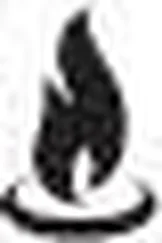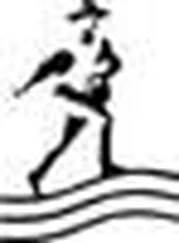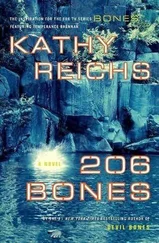Kathy Reichs - Spider Bones
Здесь есть возможность читать онлайн «Kathy Reichs - Spider Bones» весь текст электронной книги совершенно бесплатно (целиком полную версию без сокращений). В некоторых случаях можно слушать аудио, скачать через торрент в формате fb2 и присутствует краткое содержание. Жанр: Старинная литература, на английском языке. Описание произведения, (предисловие) а так же отзывы посетителей доступны на портале библиотеки ЛибКат.
- Название:Spider Bones
- Автор:
- Жанр:
- Год:неизвестен
- ISBN:нет данных
- Рейтинг книги:4 / 5. Голосов: 1
-
Избранное:Добавить в избранное
- Отзывы:
-
Ваша оценка:
- 80
- 1
- 2
- 3
- 4
- 5
Spider Bones: краткое содержание, описание и аннотация
Предлагаем к чтению аннотацию, описание, краткое содержание или предисловие (зависит от того, что написал сам автор книги «Spider Bones»). Если вы не нашли необходимую информацию о книге — напишите в комментариях, мы постараемся отыскать её.
Spider Bones — читать онлайн бесплатно полную книгу (весь текст) целиком
Ниже представлен текст книги, разбитый по страницам. Система сохранения места последней прочитанной страницы, позволяет с удобством читать онлайн бесплатно книгу «Spider Bones», без необходимости каждый раз заново искать на чём Вы остановились. Поставьте закладку, и сможете в любой момент перейти на страницу, на которой закончили чтение.
Интервал:
Закладка:
“How many recovery missions are deployed each year?” No longer affiliated with JPAC, I hadn’t a sense of current numbers.
“At least ten in Southeast Asia, maybe five associated with the Korean War.” Danny twisted his lips in thought. “Ten others wherever, you know, for World War II cases, or the Cold War. Teams are always coming or going.”
Danny’s office was the polar opposite of Merkel’s. Papers and books lay scattered about, files threatened to topple from unsteady stacks. Mementos lay tossed where they’d landed coming through the door. A signed softball. A kite. A photo of Danny digging on a mountain.
The desk held a similar array of memorabilia. A Micronesian sculpture made of what looked like pig tusks. A painted coconut. A miniature skeleton with Danny’s face glued to the skull. A stuffed lizard whose species was a mystery to me.
Danny cleared files from a chair so that I could sit. Before my arrival, he’d laid out Spider Lowery’s file. Though familiar with the contents, we started there.
Working through the documents reminded me how much time I’d spent squinting at smeared carbon copies of forms, faded message traffic, and illegible script. Spider’s record review took an hour.
“You’ve been swabbed?”
Danny referred to the DNA sampling required of anyone entering the lab. No big deal, a Q-tip swipe of the inner cheek. Specimens are kept on file should contamination become an issue with an ID.
I nodded.
We crossed to the glass wall and Danny placed his badge over the sensor. The door clicked. We entered and wove through a maze of tables, some empty, some holding bones, toward a man in a red sweater seated at a desk at the back of the room.
The Lumberton remains had been accessioned as 2010-37. Danny presented his badge and requested the case by number.
Red Sweater rose and pressed a button. Floor-to-ceiling shelving opened and he disappeared down a row. Moments later he reappeared with a long, white cardboard box.
I knew the routine. The remains would be assigned a specific table where they would be allowed to remain for thirty days. The transaction would be entered into the computer tracking system, and the location of the bones would be diagrammed on a blackboard on one wall of the room.
Danny swiped his badge, collected the box, and moved to the designated table. I followed.
We both gloved, then Danny gestured me the honors.
I lifted the cover.
The remains were as I remembered, skull shattered, lower arms and hands and both feet missing, cortical surfaces darkly mottled and covered by pink-white mold and charred muck.
Working silently, Danny and I reassembled what was left of the man so long buried in North Carolina. Skull. Torso. Arms. Legs.
When the skeleton was arranged anatomically, we ran inventory, with Danny naming bones and me recording. Though I’d done a preliminary assessment at Sugarman’s, his would be the analysis of record.
Inventory finished, he went through the same steps I’d followed at the funeral home. With the same findings.
The remains were those of a male who died between the ages of eighteen and twenty-five. Race remained elusive.
“Nothing to exclude Spider Lowery,” Danny said.
“And nothing to positively ID him.”
“Teeth are out.”
“We might spot root fragments when we X-ray. Or we could compare alveolar configurations.” I referred to the shape of the tooth sockets.
Danny shook his head. “The Form 603 is strictly narrative.”
Danny meant Lowery’s military dental record, typically containing diagrams, called odontograms, X-rays, and information about the patient’s care, identity of dentist, when, where, et cetera.
“Why no X-rays?” I asked. “Wasn’t every soldier given a dental exam at induction?”
“Theoretically, yes. If not at his or her induction center, maybe in boot camp, maybe in-country, at Bien Hoa Air Base, for example. But it didn’t always happen.”
“You’re suggesting Lowery slipped through the cracks?”
“Maybe. Here’s another possibility. Troops reporting to a new duty station often carried their own records with them. It helped with in-processing if medical and dental information arrived at the same time as the soldier.”
I saw where Danny was going. “But that didn’t always happen either.”
“No. Sometimes paperwork caught up later. Maybe Lowery’s records arrived in Vietnam after he was killed and his body was shipped home.”
“Any way to tell from the file if X-rays ever existed?”
“Not really. Say a soldier had a periapical or a bitewing done. The X-rays might have been attached to the folder using a two-hole punch. Or they might have been placed into a small manila envelope and added to the file loose. Either way, the films could be lost or misplaced.”
Sudden ominous thought. “Or deliberately removed?”
Something flicked in Danny’s eyes, vanished before I could read it.
“Meaning?” he asked.
“I don’t know,” I said.
“I suppose.” Danny lifted and gently scraped at a skull fragment, much as I’d done at Sugarman’s. “Fire damage.”
“Consistent with the reported chopper crash,” I said. “As are the missing hands and feet and the cranial fractures.”
“The biological profile, the trauma, the timing, the body recovery location. It all fit. Thus the ID at Tan Son Nhut back in sixty-eight.”
“Johnson, Dadko, and some writing-challenged medical officer shipped this guy home as Spider Lowery.”
“Weickmann.”
“What?”
“The medical officer’s name was Weickmann.”
“You could read that scrawl?”
“Years of practice.”
“Whatever. Prints from my Quebec floater say they were wrong.”
“Nam was exploding in sixty-eight. The system was overwhelmed.”
Indeed.
Early in the war, a single facility processed all Americans killed in Southeast Asia. When fatalities soared in the spring of ’67, it became apparent that the status could no longer be quo. Cramped and located in a congested part of the base, the Tan Son Nhut mortuary was inefficient, inadequate, and a hazard to health.
As a result, a second mortuary was opened at the Da Nang Air Base. Beginning in June 1967, remains recovered in the I Corps tactical zone went to Da Nang.
But the Tet offensive shot numbers into the biosphere. In February 1968, the two mortuaries processed roughly three thousand sets of remains, a total greater than for any comparable period to that point.
The upshot was the construction of a modern twenty-table facility on a new patch of ground at Tan Son Nhut. The new facility became operational in August 1968.
Spider Lowery’s Huey crashed at Long Binh in January of that year, shortly after Tet and eight months before the revamped Tan Son Nhut mortuary came online.
In the chaos of war, a mistake had been made.
At a little past one Danny and I took a break. Wanting to accomplish as much as possible that day, we passed up a nice lunch at the Officers Club or the Mamala Bay Golf Course in favor of a quick pizza at the BX. The food hole. There’s a reason for the nickname.
While driving back to the CIL, I called Katy. To describe her as unhappy would be like saying Nixon was a bit bummed by the tapes.
By two fifteen Danny and I were back with 2010-37. For the next two hours we scraped desiccated flesh and fabric from bone, a job I find excruciatingly tedious. And the smell is revolting.
Adipocere is a waxlike substance formed by the hydrolysis of fat during decomposition. I’d about had it when a small chunk of the stuff dropped into the sink from the fragment of upper jaw I was scrubbing. I watched water eddy around it, swirling bits away and down into the drain.
Читать дальшеИнтервал:
Закладка:
Похожие книги на «Spider Bones»
Представляем Вашему вниманию похожие книги на «Spider Bones» списком для выбора. Мы отобрали схожую по названию и смыслу литературу в надежде предоставить читателям больше вариантов отыскать новые, интересные, ещё непрочитанные произведения.
Обсуждение, отзывы о книге «Spider Bones» и просто собственные мнения читателей. Оставьте ваши комментарии, напишите, что Вы думаете о произведении, его смысле или главных героях. Укажите что конкретно понравилось, а что нет, и почему Вы так считаете.










